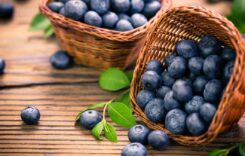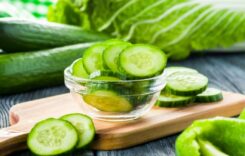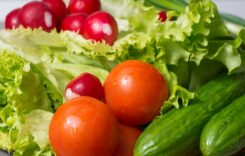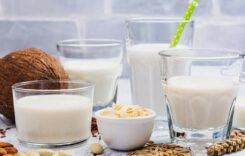Bajra is a customary Hindi name for the Pennisetum glaucum crop — otherwise called pearl millet.
It’s similarly known as dukn, cumbu, gero, sanio, kambu, babala, or bulrush millet (1).
The grain is basically developed in Africa and India, where it’s a significant wellspring of sustenance. Nonetheless, it’s likewise developed and expended in numerous different spots the world over.
Bajra alludes to the eatable seeds of pearl millet plants. They develop in different shades of white, yellow, dark, earthy colored, and pale blue purple.
The seeds are normally cooked as an oat grain or once in a while finely ground and utilized as a flour.
Bajra nourishment:
Bajra pearl millet is only one of numerous sorts of millet. Some other mainstream assortments of millet are fonio, finger millet (ragi), Job’s tears, foxtail, and kodo millet.
Most millets have great nourishing profiles, including bajra.
Here’s the normal nourishing profile of 1 cup (170 grams) of cooked millet:
- Calories: 201
- Protein: 6 grams
- Fat: 1.7 grams
- Carbs: 40 grams
- Fiber: 2 grams
- Sodium: 286 mg
- Folate: 8% of the Daily Value (DV)
- Iron: 6% of the DV
- Magnesium: 18% of the DV
- Thiamine: 15% of the DV
- Niacin: 14% of the DV
- Phosphorus: 14% of the DV
- Zinc: 14% of the DV
- Riboflavin: 11% of the DV
- Vitamin B6: 11% of the DV
When all is said in done, cooked millet is a decent wellspring of protein and carbs and a conventional wellspring of fiber. It’s likewise a decent wellspring of nutrients and minerals. By and large, millet is a nutritious starch source..
It’s additionally without gluten and an appropriate decision for individuals with celiac sickness or those after a sans gluten diet — as long as you guarantee that you’re buying an item that is confirmed sans gluten.
Bajra is high in useful plant synthetic substances like cell reinforcements, polyphenols, and phytochemicals, which are all known for adding to ideal human wellbeing from various perspectives.
Notwithstanding, the presence of gainful polyphenols may likewise hinder a portion of the minerals in bajra, for example, iron and zinc, from being completely consumed by your body.
Does bajra have health benefits?
Correspondingly to some different grains, bajra has been connected to huge medical advantages basically because of its status all in all grain food.
Normally eating entire grains like bajra may help forestall persistent conditions like diabetes, coronary illness, and certain malignancies.
In any case, eating bajra may offer more explicit medical advantages of its own, as well.
May help weight reduction:
In case you’re attempting to get in shape, including entire grain nourishments with a low calorie thickness like bajra to your eating routine might be useful.
The calorie thickness of a food quantifies its calorie content comparative with its weight (in grams) or volume (in mL).
For instance, a food that has 100 calories for each 100-gram (3.5-ounce) serving would have a calorie thickness of 1. A food that has 400 calories for every 100-gram serving would have a calorie thickness of 4.
Nourishments with a low calorie thickness assist you with feeling full yet for less calories. Nourishments with a calorie thickness more prominent than 2.3 are commonly viewed as high.
Bajra has a calorie thickness of 1.2. Along these lines, nourishments like bajra with a low calorie thickness may help weight reduction.
May be a decent decision for individuals with diabetes:
Generally, most kinds of millet are viewed as a decent grain decision for individuals with diabetes.
Nourishments that are high in fiber, particularly oat filaments like bajra, have additionally been related with improved results in the administration of type 2 diabetes and other ongoing maladies.
Likewise, millet has a lower glycemic record (GI) than some refined grain items like white rice and white bread. Besides, some developing examination in creatures and people has discovered that millet proteins may add to improved glucose levels.
By and large, most kinds of millet have a GI estimation of 43–68. Nourishments with a GI estimation of 55 or underneath are ordinarily viewed as low.
The GI is a proportion of how much certain nourishments influence glucose levels. Nourishments that are lower on the glycemic file are generally better decisions for individuals with diabetes.
Now and again, glycemic load (GL) might be a superior proportion of how a food influences glucose levels. GL varies from GI by likewise considering the ordinary serving size of a food. A GL of 10 or underneath is viewed as low, while a GL of at least 20 is high.
One investigation noticed that millet chips have a GL of 9.2, which means they have a low GL.
All things considered, a portion of the exploration that underpins these cases didn’t utilize bajra explicitly, and the utilization of both GI and GL in diabetes the executives is disputable. Accordingly, more examination is expected to see precisely how millet influences glucose levels.
Contains supplements that may uphold solid hair, skin, and nails:
You may have heard that bajra is useful for your hair, however the millet itself has not been concentrated as a hair treatment.
Nonetheless, bajra is a decent wellspring of numerous supplements known for adding to solid hair, skin, and nails, including:
- protein
- vitamin B6
- niacin
- folate
- iron
- zinc
Consistently eating bajra as a feature of your eating regimen could help forestall insufficiencies in these supplements.
All things considered, because of an absence of exploration, bajra and different millets can’t be said to straightforwardly improve hair, skin, or nail wellbeing as of now.
How to cook bajra:
Bajra is an adaptable fixing that can be utilized to supplant rice, quinoa, oats, and different grains in numerous dishes.
To get ready bajra, just bring 1 cup (170 grams) of millet and 2 cups (473 mL) of water or stock to a bubble. Next, diminish it to a stew and let it cook for around 15 minutes. This technique should create a light, fleecy grain.
In the event that you need your bajra to be more similar to a porridge, you can signify 1 extra cup (237 mL) of water, dairy, or stock. You can likewise toast the dry millet for a couple of moments before adding the fluid to draw out a rich, nutty flavor in the grain.
Before cooking, bajra might be drenched for quite a long time or even days in water or a Lactobacillus-rich dairy like buttermilk or kefir. Maturing millet and millet flour is normal in Africa and Asia. It influences its flavor and taste as well as likely its supplement content.
One examination found that pearl millet flour that was aged and solidified for 2 days had a 30% expansion in levels of some phenolic mixes. Phenolic mixes are synthetic compounds in plants that help your body react to maturing, aggravation, and persistent sickness.
While research on the theme is restricted, a few examinations recommend that drenching or growing millet before utilization, just as how the grain was at first handled, impacts the openness of certain its supplements, for example, iron, zinc, calcium, and cancer prevention agents.
Different approaches to eat bajra:
Bajra is regularly ground into a fine flour that can be utilized to make roti and different kinds of flatbread.
However, bajra flour isn’t restricted to flatbreads alone. It can likewise be utilized to make cakes and pasta or as a trade for different kinds of flour in numerous plans.
Another approach to appreciate bajra is as a puffed millet nibble like popcorn. You can purchase pre-puffed millet tidbits or pop millet at home all alone. Puffed bajra can be eaten alone or used to make sweet or appetizing café.
To pop millet, include 1 cup (170 grams) of bajra to a dry skillet. Set the warmth to medium-low and let the millet sit for a couple of moments. When it turns a brilliant earthy colored shading, mix it softly and afterward let it sit for an additional couple of moments until the entirety of the grains have popped and puffed up.
Discovering genuine bajra pearl millet might be troublesome, however you can check on the web or neighborhood strength stores that convey items from Africa, Asia, and especially India. Bajra flour ground from pearl millet might be all the more promptly accessible.
Does bajra have any risks?
In general, expending moderate measures of bajra is viewed as safe for a great many people. Since it’s a sans gluten grain, even individuals with celiac ailment can have it as long as they feel certain there was no cross-defilement with other gluten-containing grains.
One concern you may know about bajra and different millets is that they contain antinutrients. Antinutrients are mixes in specific nourishments that may impede or restrain the assimilation of other valuable supplements.
Some examination proposes that bajra contains phytates, oxalates, and potentially different antinutrients that could meddle with the assimilation of iron, zinc, phosphorus, and different micronutrients expended in a similar supper.
Once more, a few investigations recommend that maturing or growing millet before utilization, alongside how it was handled, impacts its antinutrient levels and the absorbability of a portion of its micronutrients and cancer prevention agents.
Notwithstanding, it’s critical to take note of that the advantages of devouring supplement thick nourishments that likewise contain some antinutrients for the most part exceed the drawbacks of not expending these supplement thick food sources by any means.
Besides, splashing, aging, or rambling millet may lessen its antinutrient content.










